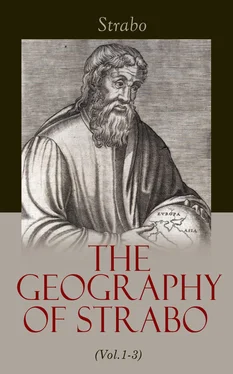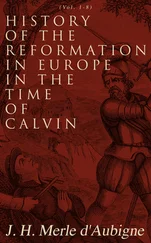20. At the present time some of the provinces having been assigned to the people and senate of the Romans, and the others to the emperor, Bætica appertains to the people, and a prætor has been sent into the country, having under him a quæstor and a lieutenant. Its eastern boundary has been fixed near to Castlon. 1257The remainder belongs to the emperor, who deputes two lieutenants, a prætor, and a consul. The prætor with a lieutenant administers justice amongst the Lusitanians, who are situated next Bætica, and extend as far as the outlets of the river Douro, for at the present time this district is called Lusitania by the inhabitants. Here is [the city of] Augusta Emerita. 1258What remains, which is [indeed] the greater part of Iberia, is governed by the consul, who has under him a respectable force, consisting of about three legions, with three lieutenants, one of whom with two legions guards the whole country north of the Douro, the inhabitants of which formerly were styled Lusitanians, but are now called Gallicians. The northern mountains, together with the Asturian and Cantabrian, border on these. The river Melsus 1259flows through the country of the Asturians, and at a little distance is the city of Noïga, 1260close to an estuary formed by the ocean, which separates the Asturians from the Cantabrians. The second lieutenant with the remaining legion governs the adjoining district as far as the Pyrenees. The third oversees the midland district, and governs the cities inhabited by the togati, whom we have before alluded to as inclined to peace, and who have adopted the refined manners and mode of life of the Italians, together with the toga. These are the Keltiberians, and those who dwell on either side of the Ebro, as far as the sea-coast. The consul passes the winter in the maritime districts, mostly administering justice either in [the city of] Carthage, 1261or Tarraco. 1262During the summer he travels through the country, observing whatever may need reform. There are also the procurators of the emperor, men of the equestrian rank, who distribute the pay to the soldiers for their maintenance.
Table of Contents
1. Of the islands which are situated in front of Iberia, two named the Pityussæ, and two the Gymnasiæ, (also called the Baleares,) are situated on the sea-coast between Tarraco and [the river] Xucar, on which Saguntum 1263is built. The Pityussæ are situated farther in the high seas and more to the west than the Gymnasiæ. One of the Pityussæ is called Ebusus, 1264having a city of the same name. This island is 400 stadia in circumference, and nearly equal in its breadth and length. The other, [named] Ophiussa, is situated near to this, but is desert, and much smaller. The larger 1265of the Gymnasiæ contains two cities, Palma, 1266and Polentia; 1267the latter lying towards the east, the former towards the west. The length of this island is scarcely less than 600 stadia, its breadth 200; although Artemidorus asserts it is twice this size both in breadth and length. 1268The smaller island 1269is about [2]70 stadia distant from Polentia; in size it is far surpassed by the larger island, but in excellence it is by no means inferior, for both of them are very fertile, and furnished with harbours. At the mouths of these however there are rocks rising but a little out of the water, which renders attention necessary in entering them. The fertility of these places inclines the inhabitants to peace, as also the people of Ebusus. But certain [Pg 252] [CAS. 168] malefactors, though few in number, having associated with the pirates in those seas, they all got a bad name, and Metellus, surnamed Balearicus, marched against them. He it was who built the cities. But owing to the great fertility of the country, these people have always had enemies plotting against them. Although naturally disposed to peace, they bear the reputation of being most excellent slingers, which art they have been proficient in since the time that the Phœnicians possessed the islands. It is said that these 1270were the first who introduced amongst the men [of the Baleares] the custom of wearing tunics with wide borders. They were accustomed to go into battle naked, having a shield covered with goat-skin in their hand, and a javelin hardened by fire at the point, very rarely with an iron tip, and wearing round the head three slings of black rush, 1271hair, or sinew. The long sling they use for hitting at far distances, the short one for near marks, and the middle one for those between. From childhood they were so thoroughly practised in the use of slings, that bread was never distributed to the children till they had won it by the sling. 1272On this account Metellus, when he was approaching the islands, spread pelts over the decks, as a shelter from the slings. He introduced [into the country] 3000 Roman colonists from Spain.
2. In addition to the fruitfulness of the land, noxious animals are rarely to be met with. Even the rabbits, they say, were not indigenous, but that a male and female having been introduced by some one from the opposite continent, from thence the whole stock sprung, which formerly was so great a nuisance that even houses and trees were overturned, [being undermined] by their warrens, and the inhabitants were compelled, as we have related, to resort for refuge to the Romans. However, at the present day the facility with which these animals are taken, prevents them from doing injury, consequently those who possess land cultivate it with advantage. These [islands] are on this side of what are called the Pillars of Hercules.
3. Near to them are two small islands, one of which is called the Island of Juno: some call these the Pillars. Beyond the Pillars is Gades, 1273concerning which all that we have hitherto remarked is, that it is distant from Calpe 1274about 750 stadia, and is situated near to the outlet of the Guadalquiver. 1275Notwithstanding there is much can be said about it. For its inhabitants equip the greatest number of ships, and the largest in size, both for our sea, 1276and the exterior [ocean], although the island they inhabit is by no means large, nor yet do they possess much of the mainland, nor are masters of other islands. They dwell for the most part on the sea, only a few staying at home or passing their time in Rome. Still, in amount of population, their city does not seem to be surpassed by any with the exception of Rome. I have heard that in a census taken within our own times, there were enumerated five hundred citizens of Gades of the equestrian order, a number equalled by none of the Italian cities excepting that of the Patavini. 1277However, notwithstanding their vast number, its inhabitants possess an island, in length 1278not much above 100 stadia, and in some places only one stadium in breadth. Originally the city in which they dwelt was extremely small, but Balbus 1279the Gaditanian, who received the honours of a [Pg 254] [CAS. 169] triumph, added another to it which they call the New Town. These two form the city of Didyme, 1280which is not above twenty stadia in circumference. In it, however, they are not pressed for room, because few live at home, the majority passing their lives on the sea, some too dwelling on the opposite continent, and particularly on a little island adjacent on account of its excellence. They have such a liking for this place as almost to have made it a rival city to Didyme. However, few in comparison inhabit either this or the sea-port which Balbus constructed for them on the opposite continent. Their city is situated in the western parts of the island. Near to it is the temple of Saturn, which terminates [Gades to the west], and is opposite the smaller island. The temple of Hercules is on the other side, to the east, where the island approaches nearest to the mainland, being only separated therefrom by a strait of a stadium [in breadth]. 1281They say that this temple is twelve miles from the city, thus making the number of miles and the number of [Hercules’] labours equal: but this is too great, being almost equal to the length of the island. Now the length of the island runs from west to east.
Читать дальше












![Anne Blunt - A Pilgrimage to Nejd, the Cradle of the Arab Race. Vol. 2 [of 2]](/books/750183/anne-blunt-a-pilgrimage-to-nejd-the-cradle-of-the-thumb.webp)